Introducción
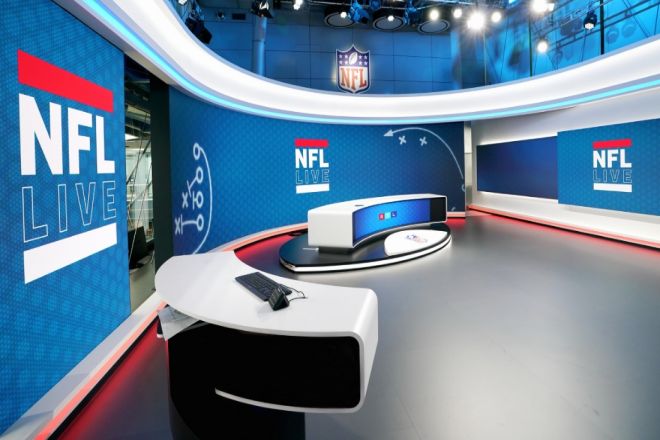
We can often see LED displays on TV or variety shows. They add rich visual effects and dynamic interactive experience to the program. With the rise of online programs and the rapid development of intelligent technology, pantallas de visualización LED have become increasingly important in studios and have almost become indispensable.
However, in the face of a dazzling array of LED display products on the market, how to choose a display screen that is most suitable for studio use has become a question worth discussing. Next, let’s discuss this topic together.
1. The importance of studio LED display
The importance of LED display in the studio is not only reflected in its technical performance and visual effects but also in how it combines with program content, production process, and audience experience to jointly create a unique and fascinating studio environment.
- En primer lugar
The technical characteristics of LED displays ensure high-quality picture presentation. High brightness allows the picture to remain clearly visible in strong light environments; high contrast makes blacks deeper and colors more vivid; and a wide color gamut ensures the accuracy and richness of colors.
Together, these features bring a delicate and realistic visual experience to the audience, making the program content more vivid and interesting.
- En segundo lugar
The flexibility and customizability of LED displays provide great convenience for program production. Different program types and contents have different requirements for picture composition and visual effects. LED displays can be customized according to these needs to meet various levels of creativity and imagination.
At the same time, seamless splicing technology allows multiple screens to be combined into a continuous and complete picture, bringing more shocking visual effects to the audience.
- Además
The advantages of LED displays, such as energy saving, environmental protection, long life, and low maintenance costs, also make them an ideal choice in studios. Compared with traditional display devices, LED displays have lower energy consumption and longer lifespan, which means that a lot of energy and maintenance costs can be saved during long-term operation.
At the same time, this is also in line with today’s society’s requirements for sustainable development and contributes to the green and environmentally friendly construction of the studio.
- Finalmente
The real-time interaction and multiple signal source access functions of the LED display bring more innovation and possibilities to program production. By cooperating with cameras, computers, switchers, and other equipment, the LED display can achieve real-time interaction with live audiences, guests, and hosts, adding more fun and interactivity to the program.
At the same time, access to multiple signal sources also makes program production more flexible and diverse, which can meet the production needs of different programs.
2. Studio LED display = small spacing LED display?
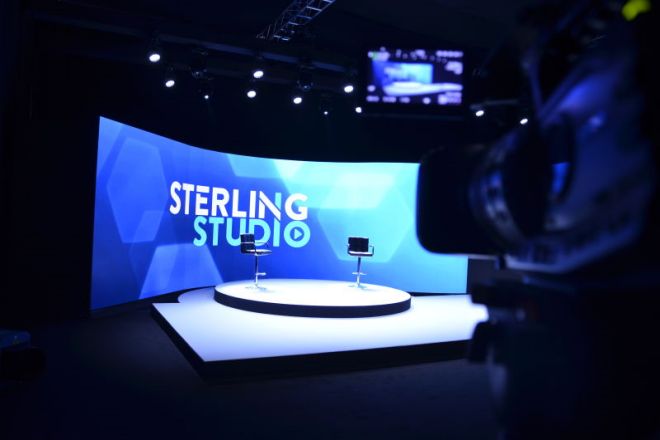
The best choice for studio LED displays is, of course, pantallas LED de paso pequeño, but not all studio LED displays are small-pitch LED displays.
When the purchase funds are sufficient, and the shooting requirements are very high, the studio may use small-pitch LED displays. Studio LED display screen refers to LED display equipment used in studio environments. Its main function is to present high-quality images and videos to meet the needs of television program production and broadcast.
Small-pitch LED displays refer to LED displays with smaller pixel pitches, which usually have higher resolution and more delicate picture performance. The pixel pitch of small-pitch LED displays is usually less than 1.0 mm, which is suitable for high-end display needs such as high-definition, ultra-high-definition, and even 8K.
In a studio environment, in order to meet the needs of high-definition photography and high-quality images, small-pitch LED displays are usually chosen. This is because the small-pitch LED display has the characteristics of high resolution, high brightness, high contrast, and color accuracy and can provide excellent image quality and visual effects.
At the same time, small-pitch LED displays are also highly flexible and customizable and can be customized according to the specific needs of the studio, such as size, shape, resolution, etc.
However, not all studio LED displays are small-pitch LED displays. In some specific application scenarios, such as large studios, outdoor billboards, etc., LED displays with larger spacing may be used. Although these displays have larger pixel pitches, they have higher brightness and wider viewing angles, making them suitable for long-distance viewing or large-scale scene presentations.
Therefore, studio LED displays and small-pitch LED displays are not equivalent concepts. Studio LED displays may include small-pitch LED displays but may also include other types and specifications of LED displays, depending on the specific needs and application scenarios of the studio.
3. What characteristics does a studio LED display need to have?
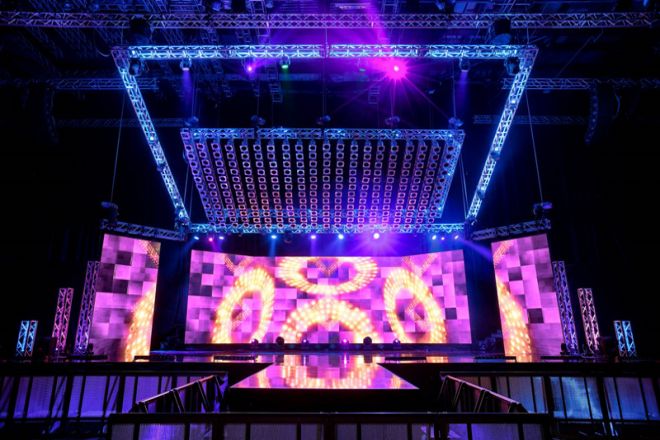
Alta resolución:
In order to present clear images and videos, LED displays need to have high resolution, usually reaching a resolution standard of 1080p or higher. This ensures that viewers can still see a clear picture when viewing at close range.
It’s super high resolution, just as clear as your phone screen, or even clearer! This means that whether you’re sitting at the front or back of the studio, you’ll be able to see every detail on the screen.
Brillo alto:
There is usually strong light in studios, including natural light and artificial lighting. Therefore, the LED display needs to have high enough brightness to ensure clear picture performance in a well-lit environment.
You may think that the TV screen is bright enough, but the brightness of this LED display is even higher. This is because there are usually a lot of lights in the studio, and if the screen isn’t bright enough, the audience won’t be able to see clearly. This high-brightness LED display can maintain a clear picture even under strong light, making it enjoyable for the audience to watch!
Alto contraste:
High contrast ensures deeper blacks and more vivid colors. This is crucial for rendering high-quality images and videos, especially in brightly lit environments.
Wide color gamut:
A wide color gamut means that the LED display can present more colors and color levels, ensuring color accuracy and richness. This is very important to restore the real scene and provide excellent visual effects.
The colors of this LED display are super bright and realistic, just like the colors you see in reality. This is because it has a wide color gamut and can present more colors and color gradations. In this way, the audience can enjoy a more realistic and vivid picture!
Seamless splicing:
For large studios or scenes that need to display larger images, LED displays need to support seamless splicing. This allows multiple displays to be combined into one continuous, complete picture, providing a greater visual experience.
Imagine if you had many screens like this and you could put them together to form one super big screen! Moreover, there won’t be any gaps between these screens, and they will look like one complete screen. In this way, no matter how big your studio is, you can still produce stunning visual effects!
Stability and reliability:
Studios usually need to operate for a long time, so the LED display needs to have a high degree of stability and reliability. This means that the display should be able to withstand long periods of operation and frequent power-on and off cycles without malfunctions or performance degradation.
Buen rendimiento de disipación de calor:
LED displays will generate heat during operation. Poor heat dissipation will lead to performance degradation or even damage. Therefore, good heat dissipation performance is an important factor in ensuring the stable operation of LED displays.
- Adjustable brightness and color temperature:
In order to adapt to different light environments and program needs, LED displays need to have adjustable brightness and color temperature functions. This allows the brightness and color temperature of the display to be adjusted according to the actual situation to obtain the best visual effect.
4. What are the common installation locations of LED displays in studios?
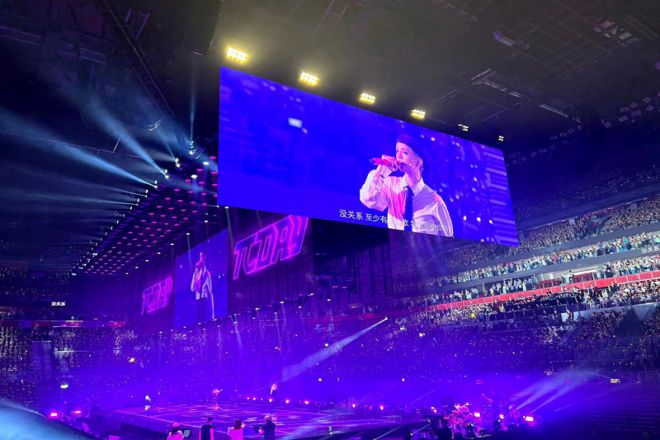
In the studio, LED displays can be installed in multiple locations according to different needs and scenarios to meet different functions and applications. Here are some common installation locations:
- Background wall:
The background wall of the studio is one of the most common installation locations for LED displays. By using the display screen as the background, you can provide rich visual effects and background materials for the program to create different atmospheres and scenes.
The background wall LED display can be customized according to the needs of the program, such as size, shape, resolution, etc., to achieve the best visual effect.
You can imagine that when the host stands in front of a huge LED display screen, the background is constantly changing with beautiful scenery, cool animations, or dreamy patterns.
Does it feel like the entire program has become taller? The background wall LED display is like putting on a gorgeous dress for the studio, making the program more exciting.
- Sidewall or corner:
In addition to the background wall, side walls or corners are also common installation locations for LED displays. Displays in these locations can be used to complement the background wall or to display relevant content, such as sponsor information, advertisements, etc.
LED displays on side walls or corners can be flexibly installed and adjusted according to the layout and design of the studio.
They are like “little assistants” in the studio, silently providing additional visual effects to the show.
For example, when the host is introducing a sponsor, the LED display on the side wall or corner can display the sponsor’s advertisement or information so that the audience can see it at a glance.
- Suspended installation:
In some studios, in order to make full use of space or create unique visual effects, LED displays can be installed suspended. This installation method can hang the display screen on the top of the studio or other high places and fix it through hoisting or hoisting frames.
The suspended LED display can present stunning visual effects and is especially suitable for large studios or specific program needs.
Some studios also hang LED displays in the air, just like hanging a huge painting in the studio. This suspended-mounted LED display can not only create stunning visual effects but also make the studio space feel more open and three-dimensional.
- Mobile installation:
In order to meet more flexible and diverse needs, some studios will also choose to install mobile LED displays. This kind of display screen can be moved to different locations as needed, such as the stage, auditorium, etc., to provide real-time visual effects and interactive experience for the program.
Mobile-mounted LED displays need to be lightweight and easy to transport and install so that they can quickly adapt to different scenarios and needs.
They are like “wanderers” in the studio and can be moved to different locations at any time.
For example, when a special effect needs to be displayed on the stage or a real-time interactive effect needs to be seen in the audience, these mobile LED displays can quickly transform into the most suitable “magic window.”
5. How do you maintain the LED display screen in the studio?
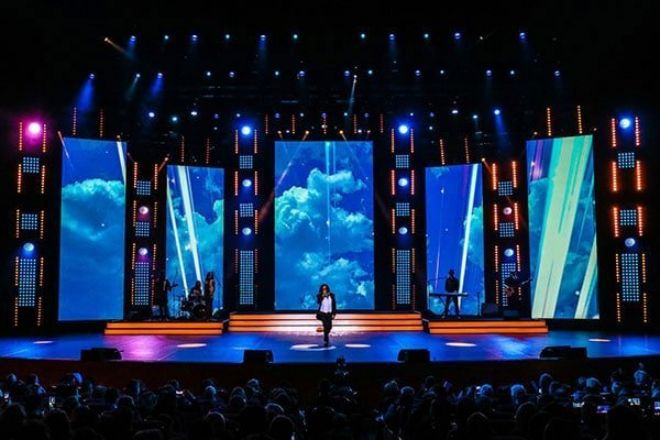
Keep the LED display screen clean, as there is often dust and dirt in the studio, which will affect the display effect of the display screen. Therefore, we should regularly wipe the display surface with a soft cloth to remove dust and dirt. But be careful not to use chemical cleaners or wipe with a cloth that is too hard, as this will damage the display.
It is necessary to avoid leaving the LED display screen in a high-load working state for a long time. Just like we get tired after working for a long time, the display will also get “tired” after working for a long time. Therefore, we must reasonably arrange the use time of the display screen to avoid long-term continuous use.
In addition, be careful not to play too intense or dynamic images on the display screen, which may also cause damage to the display screen. Pay attention to adjusting the brightness and contrast of the display screen.
If the brightness is too high or the contrast is too large, it will cause damage to the display screen. Therefore, we need to adjust the brightness and contrast according to the actual situation so that the display screen can present the best display effect.
Regularly check whether the display cable and power plug are loose or damaged. If any looseness or damage is found, deal with it in time to avoid affecting the normal use of the display.
Conclusión
The above is all the knowledge about LED displays in studios. If you want to know more about LED displays, please get in touch with us!
